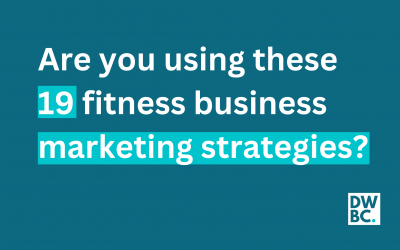There are few marketing strategies as powerful for a Personal Trainer, Gym, or Fitness Professional as social proof.
Social proof is quite simply about sharing the experience and successes of your current and previous clients.
When potential new Personal Training clients or gym members visit your social media or website, they should be able to see that your methods work, and the best way to do this is through testimonials.
Testimonials can take multiple forms, from short written testimonials, to feature videos that tell the stories of your clients.
Regardless of the medium you choose to use, there are a few considerations you should make to ensure your testimonials are an effective tool to get more clients.
Don’t call them ‘testimonials’:
It’s so important that you use the language of your avatar – the language of the people you want to attract. Time and time again I see people using the word ‘testimonial’ in big, bold text, followed by a quote from one of their members. You may as well say ‘you’re about to be marketed to’. Announcing that you’re about to share a testimonial is like saying ‘ check out this compelling first sentence of my ad copy’ or ‘and here’s the call to action’.
Often you don’t need a heading, just jump straight into the testimonial. If you feel like you need something, either say something like ‘Jess shares how semi private training changed her life’, or ‘Our members share their stories’. Another great tactic I use is to pick two to three words from the testimonial to act as the heading. Something like, ‘Blew my mind!’.
Introduce your testimonials well, and potential clients will see you as sharing stories with them, not marketing to them.
Use the present tense:
Slight changes in the language we use can make a huge difference to how people perceive the message. With testimonials, you should always use the present tense. For example, ‘Tom WAS a very caring and empathetic coach’ would become ‘Tom IS a very caring and empathetic coach’.
The present tense makes people perceive that the statement isn’t just someone’s opinion, but is more of an assertion that’s stated as a fact.
The person giving the testimonial should match your avatar:
Your avatar is your ‘ideal client’. Make sure if you’re trying to attract women in their 40s, your testimonials are given by women in the 40s.
Keep them short:
If you ask a client or member for a testimonial, they’ll probably write you a paragraph or two. And this is great! But it’s VERY rare that a potential client would read more than a few lines. It’s better to have six short testimonials than one long one. Once you’ve got a testimonial, edit it down to under 30 words. Of course, you should always run it by your client to make sure you’re ok with the shorter selection you’ve chosen.
Each of your testimonials should support your unique selling proposition (USP):
An effective testimonial should strongly feature your USP, the thing that you do best. An example of a USP for a Personal Trainer might be ‘motivating yet caring Personal Training’. If this is your USP, make sure your testimonials support that. For example, ‘Jessie is just so supportive. She’s helped totally rebuild my fitness and self-confidence.’
Each of your testimonials should support the pain points you solve:
Many Fitness Professional websites just talk about themselves. Instead, an effective fitness website should talk about solutions to the problems that are common to the target client. For example, in a website I built for ‘Say Yes Fitness’, I helped the business owner identify how they helped solve problems, by explaining that they are the expert in:
- Regain the energy to exercise and live a balanced life.
- Find a way to fit in regular exercise around your busy life.
- Gently start (or restart) your journey back to health.
- Rebuild confidence in your body and your mind.
- Overcome the guilt that can come from ‘Saying Yes’ to yourself.
- Build connections and engagement within a healthy community.
If you’re going to state these solutions on your website (which you definitely should), make sure your testimonials support these solutions. For example, on of the testimonials we used for Say Yes Fitness was ‘A wonderfully inclusive and supportive group! The trainers and classes are a great stress relief and escape from a long day with a baby.’. You can see this directly supports the final ‘problem solution’ point I just mentioned ‘Build connections and engagement within a healthy community.’
Authority figures
Using testimonials from respected professionals like doctors and psychologists can significantly boost the trustworthiness of fitness and personal training services. These figures are well-known and respected in their areas, so their positive feedback adds extra trust and believability.
Their stories do more than just showcase success; they also assure potential clients about the health and safety benefits of your program. When shared genuinely, these endorsements from authority figures are more than just advertisements; they effectively demonstrate your program’s positive effects from a knowledgeable point of view, making them very appealing to potential clients.
Ultimately, testimonials and social proof are vital in creating a compelling and highly converting fitness website. With a bit of planning and careful consideration, testimonials can go from being an afterthought to a major marketing strategy.





